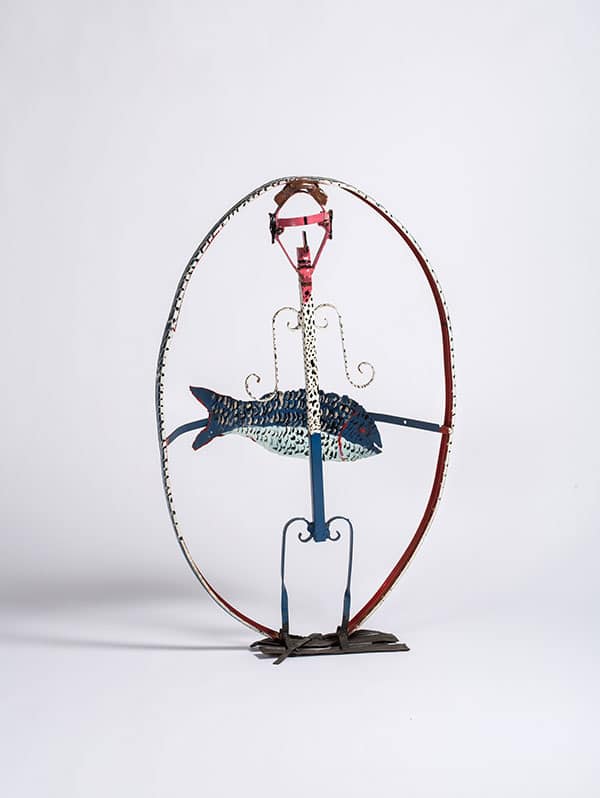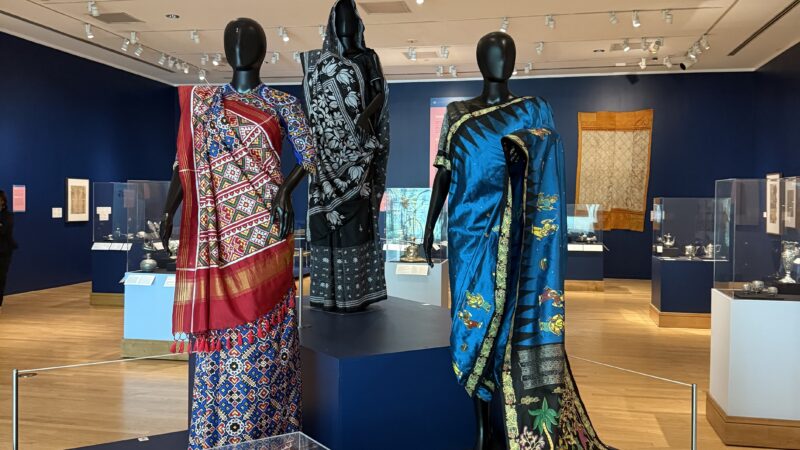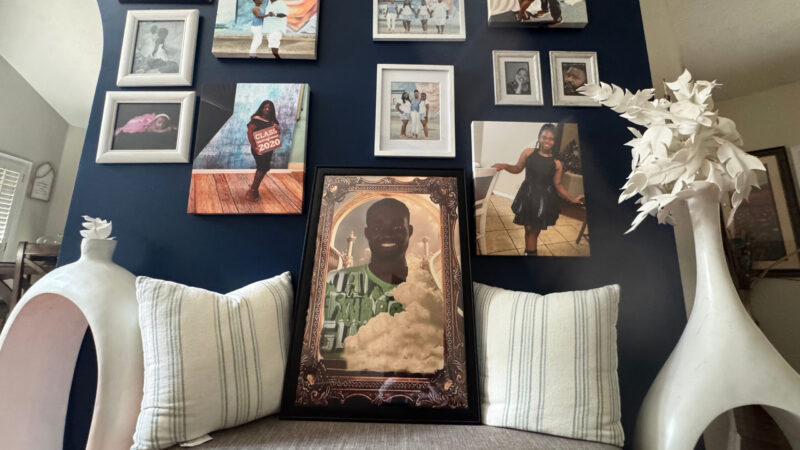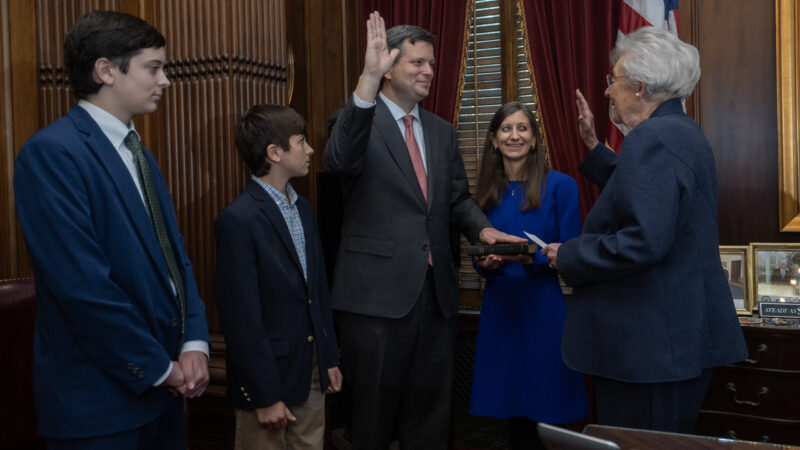Late Alabama artist Thornton Dial honored with first full-scale retrospective in his home state
Thornton Dial's art has been recognized nationally, but this is the first exhibit spanning his full career to be shown in his home state.
By Rachel Parker, WBHM Reflect Alabama Fellow
As a child, Richard Dial can remember hearing his mother on the phone at two or three in the morning with their neighbor, asking him to try and get his father, Thornton Dial, to come inside from the backyard workshop after her own failed attempts. He was still busy creating art.
“Art was a part of his life,” Richard Dial said. “I think he really found his niche in life, his purpose in life,” Richard says.
Some of Thornton Dial’s pieces eventually made it into the nation’s top museums, including the Metropolitan Museum of Art in New York. But recognition of the Alabama-born artist by the larger art world did not come through a traditional path. Dial, who died in 2016, had little formal education and no art training.
Now, the University of Alabama at Birmingham’s Abroms-Engle Institute for the Visual Arts presents the first retrospective of Dial’s work in his home state. The exhibit, Thornton Dial: I, Too, Am Alabama, is open through Saturday.

One of the many jobs Dial worked throughout his life was as a metalworker at the Pullman Standard Plant in Bessemer, AL. From his different jobs, he sharpened his artistic skills and used materials he worked with daily, such as rope, wires, metal and fishing lures, to make art.
“I think that is a classic, prime example of some of his best works,” said Brandon Dial, Thornton Dial’s grandson. “When you’re taking things that people consider to be scraps and you’re turning it into something that is truly a treasure.”
In his popular piece called, “How Things Work: The Parade of Life,” two female figures made up of swirling colors – red, orange, black, yellow and white – spread across the canvas. Look closer and there’s a “parade” of children’s toys – cars and legos – lined up and attached to the painting. The objects appear to move through and around the women’s bodies.

“That’s the power of Mr. Dial’s work is that there is a lot of depth to it. There’s a lot of meaning behind it. Sometimes you can add your own meaning. Sometimes you know what his meaning is. It’s not just what the face value is like, what you see initially,” AEIVA Assistant Curator Tina Ruggieri said.
A rose and women were recurring symbols for Dial. They represent his relationship to the women in his life, since he was raised by his grandmother and aunts.
Dial’s artwork also reflects real world, complicated topics including politics, race, class and the environment.
“He would go to work, come home and eat. And he would always, always, every day, he would stop and watch the news. So he knew what was going on in the world,” Richard Dial said.
A timeline made up of plaques in the exhibit connects Dial’s life to contemporary historical events. For instance, the birth of his first child in 1953 is followed by the lynching of Emmett Till in 1955.
Dial wanted his art to be a force for change. He said to make that happen we should focus on the “little man,” which he described as people in the minority and lower class who are often forgotten, and their ideas.
“I see a lot of optimism in a lot of Thornton Dial’s work, even when he’s dealing with very difficult subject matter,.” said Paul Barrett, curator of the UAB exhibit.
While Dial gained widespread acclaim, Barrett says a show like this in Alabama is overdue.
“The fact that Thornton Dial’s work was not just recognized but celebrated in museums in New Orleans and Atlanta for many years before he was celebrated in his hometown, I think was a historic injustice that we were very happy to address,” Barrett said.
The University of Alabama at Birmingham holds WBHM’s broadcast license, but our news and businesses department operate independently.
Editor’s note: Story updated to attribute quote to AEIVA Assistant Curator Tina Ruggieri
Alabama Public Television meeting draws protesters in Birmingham over discussion of disaffiliating from PBS
Some members of the Alabama Educational Television Commission, which oversees APT, said disaffiliation is needed because the network has to cut costs after the Trump administration eliminated all funding for public media this summer.
Gov. Kay Ivey urges delay on PBS decision by public TV board
The Republican governor sent a letter to the Alabama Educational Television Commission ahead of a Nov. 18 meeting in which commissioners were expected to discuss disaffiliation.
A proposed Bessemer data center faces new hurdles: a ‘road to nowhere’ and the Birmingham darter
With the City Council in Bessemer scheduled to vote Tuesday on a “hyperscale” data center, challenges from an environmental group and the Alabama Department of Transportation present potential obstacles for the wildly unpopular project.
Birmingham Museum of Art’s silver exhibit tells a dazzling global story
Silver and Ceremony is made up of more than 150 suites of silver, sourced from India, and some of their designs.
Mentally ill people are stuck in jail because they can’t get treatment. Here’s what’s to know
Hundreds of people across Alabama await a spot in the state’s increasingly limited facilities, despite a consent decree requiring the state to address delays in providing care for people who are charged with crimes but deemed too mentally ill to stand trial. But seven years since the federal agreement, the problem has only worsened.
Ivey appoints Will Parker to Alabama Supreme Court
Parker fills the court seat vacated by Bill Lewis who was tapped by President Donald Trump for a federal judgeship. The U.S. Senate last month confirmed Lewis as a U.S. district judge.








